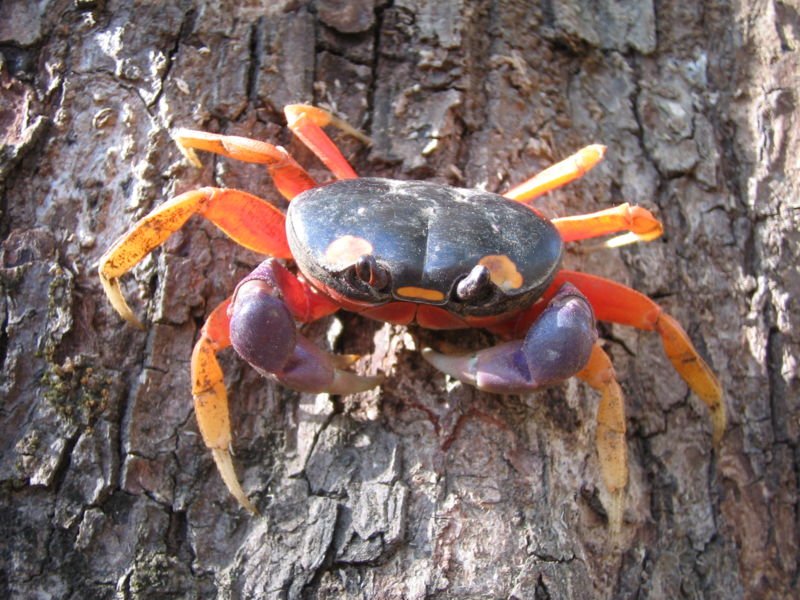|
TRANSLATIONS
At last the summary page of pure:
I remember the Flounder and the Lobster. Flat fish cannot represent an equinox, it must be a solstice. The bent shapes of mago and humpback, on the other hand, point at equinoxes. The Lobster is inside his carapace and therefore resembles Tagaroa. Given that the Flounder is in opposition to the Lobster, it becomes probable the Lobster also must be at a solstice. One of the oldest zodiacal signs was Cancer, another carapace animal. The old Babylonians, we remember, had a Tortoise instead: ... Let us suppose that what happened in the case of Aries and Libra happened with six constellations out of the twelve: in other words, that the original zodiac consisted only of six constellations.
The upper list not only classifies in an unbroken manner the Fish-Man, the Goat-Fish, the Scorpion-Man, and Marduk of the Babyloniana, but we pick up all or nearly all of the ecliptic stars or constellations met with in early Egyptian mythology, Apis, The Tortoise1, Min, Serk-t, Chnemu, as represented by appropriate symbols. 1 I think I am right about the Tortoise, for I find the following passage in Jensen, p. 65, where he notes the absence of the Crab: ‘Ganz absehend davon, ob dasselbe für unsere Frage von Wichtigkeit werden wird oder nicht, muss ich daran erinnern, das unter den Emblemen, welche die sogenannten ‘Deeds of Salè’ häufig begleiten, verschiedene Male wie der Scorpion so die Schildkröte abgebildet gefunden wird’ ...
(Halloween Crab, Wikipedia) "Crabs are decapods—ten-legged omnivores—but the front pair of legs are specialised with enlarged claws, so they are often described as eight-legged." (Wikipedia) The Lobster is growing and must change his shell sometimes (like the serpent). The left over old carapace is like pure. Once again we can cite Jensen, who tells about 'the shape of an overturned boat' (like a cowrie male side up, I think); viz. how the Babylonians imagined the earth to be: ... Da ferner sofort nachgewiesen werden wird, dass sich der apsū unter der Erde ihrer ganzen Ausdehnung nach befindet und ein Höhlung unter der Erde nur verursacht werden kann durch eine Wölbung der Erde, werden wir nicht umhinkönnen, diese Vorstellung von dem apsū wieder gespiegelt zu sehen in dem Bericht des Diodor, dem gemäss die Erde von den Chaldäern in der Gestalt eines umgestülpten Bootes vorgestellt wurde ... Changing sexes at 'noon', from black to white, from female to male implies that solstices are ambivalent. Or rather, they are unions. At winter solstice the union results in a new year. At summer solstice, obviously, a new year also must result. It is at least obvious for people like the Polynesians who are aware of winter being summer at the other side of the equator. On the other side of the equator Tagaroa becomes Tagaroa uri. The Flounder got mud in his (her?) eye, alluding - I think - to the primeval mound: ... Captain Cook recorded (the first record of Polynesian mythology ever made) this Tahitian account of the Creation: 'Ta'aroa tahi tumu, Ta'aroa origl. stock - most commonly Ta'aroa or Te Tumu - existed before everything except of a rock (Te Papa) which he compressed and begat a daughter (Ahuone) that is Vegetable Mole.* * Ahuone means 'earth heaped up' - a widespread name for the Polynesian first woman. It sounds as if Cook also heard the term applied to the banks of humus and rotting material on which taro is grown. In the English of his day this was known as 'vegetable mould'
To have a dirty face and eyes sounds like pea (in Papa O Pea, the 27th kuhane station) 'to go away with bits of food or mud sticking to one's face or garments'. ... They buried him in Hare O Ava. They dug a grave, dug it very deep, and lined it with stones (he paenga). When that was done, they lowered the dead into the grave. Tuu Maheke took it upon himself to cover the area where the head lay. Tuu Maheke said, 'Don't cover the head with coarse soil (oone hiohio)'. They finished the burial and sat down ... They lined the grave with he paega - and we are back to the bent henua in pure (which is a word close to pare). |


